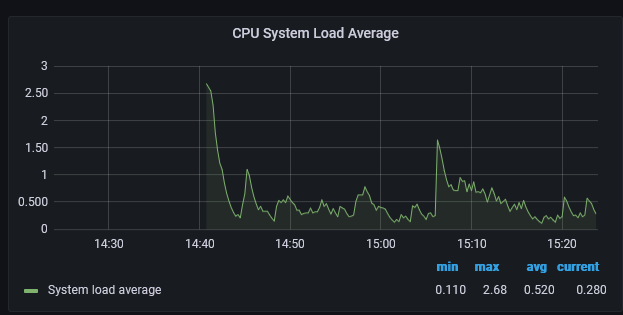Running Prometheus and Grafana
i2 Analyze and its components provide a number of metrics through REST endpoints. You can use Prometheus to monitor your deployment, and Grafana to visualize the captured data.
About this task
- Update the i2 Analyze configuration to enable metrics reporting
- Configure and run Prometheus and Grafana
- View the monitoring reports in Grafana using the provided dashboards
Complete the following steps to enable metrics on i2 Analyze, and configure and install the monitoring tools.
Procedure
What to do next
Connect to the Grafana UI to review the dashboards. In
a browser, navigate to your Grafana instance. For example, http://localhost:3000/dashboards.
By default, Grafana includes an admin user that you can use to log in. The user name is "admin" and the password is "admin".
The toolkit includes the following example dashboards:- The "i2 Analyze License Reporting" dashboard reports on the usage of your system
by analysts. For example: User Activity, Privacy Agreement Count, and License
Consumption.For example:

- The "Liberty-Metrics" dashboard reports on the hardware usage of the Liberty
server. For example: CPU Load, Heap Usage, and JVM Uptime.For example:

To run Prometheus and Grafana in production, you might want to configure authentication, authorization, and other features. You can use the Prometheus and Grafana documentation to determine how to configure these features.
- When you move into pre-prod and production deployment, you might be deploying
with TLS. You can configure Prometheus to communicate with Liberty by using
TLS:
- Securing Prometheus API and UI endpoints using TLS encryption
- To communicate with Liberty using TLS, you must uncomment the
<quickStartSecurity>element in the server.extensions.xml file and provide a user name and password to authenticate with.
- You can configure user authentication:
